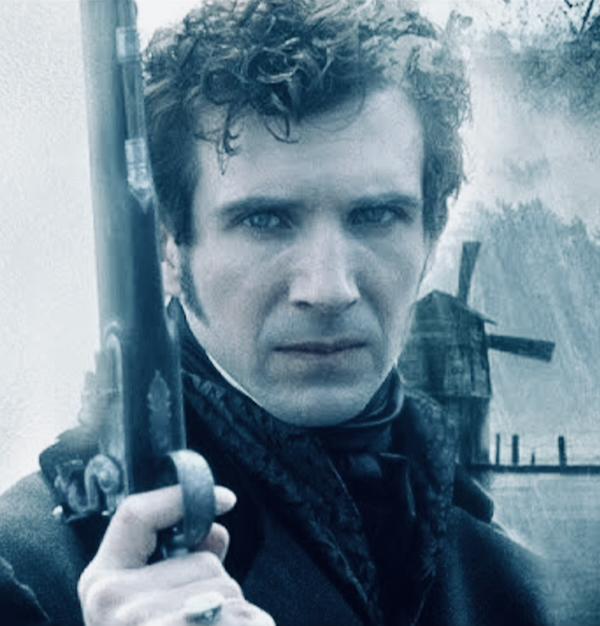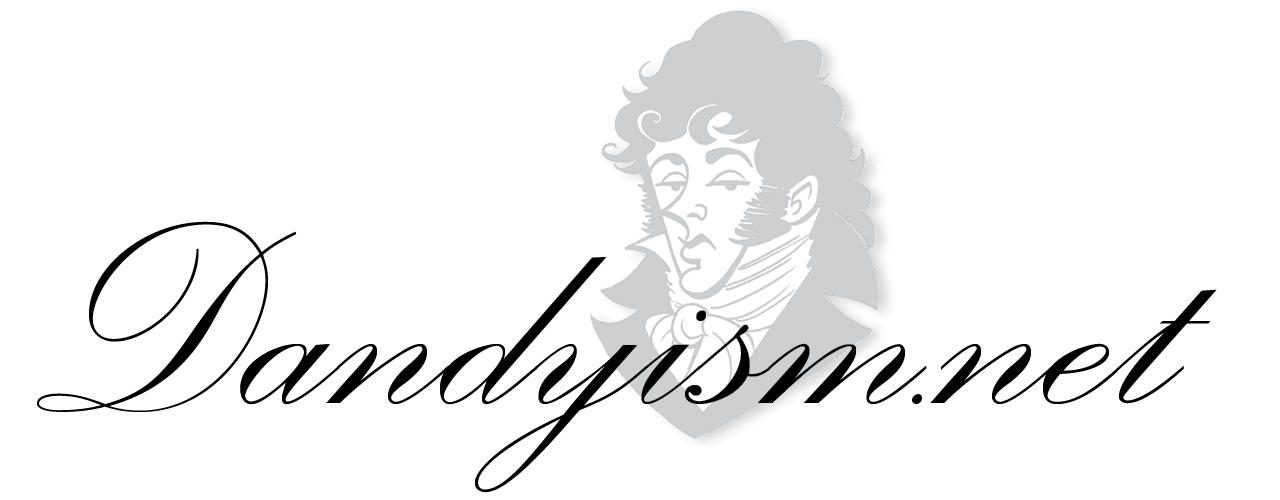
In literature, dandyish characters occasionally find cause to duel. Sword in hand, Mikhail Lermontov’s dandyish Byronic hero Pechorin fights a duel on a cliff’s edge in order for the loser’s death to appear accidental when he falls. Pushkin’s fictional dandy, Eugene Onegin, is another to have taken to the field of honor when he tragically slays his friend, Lensky. And who could forget the elusive Scarlet Pimpernel.
While fictional dandies can be found on the page crossing swords or exchanging pistol shot, can the same be said for stylish men in real-life history? Historical dandies are known as idlers by nature, or as Charles Baudelaire once put it, “A dandy does nothing.” Perhaps, then, the living and breathing dandy does not seem to be the most suitable person for pursuing things like fencing, shooting, and dueling. But appearances can deceive.
As with most duels, this one begins with an insult. Writing in his column Pall-Mall Semaine, Reitif de la Bretonne, nom de plume of Jean Lorrain (whose real name was Paul Duval), singled out another young writer by the name of Marcel Proust. Lorrain had written a review of Proust’s first novel Pleasures and Days. Among Lorrain’s criticisms, he found Proust’s work “elegiac spinelessness.” He thought it full of “tenderness, vain, inane flirtations, and pretentious in style.” He then went on to write of Proust’s private affairs. He hinted at Proust having an affair with M. Alphonse Daudet’s son, Lucien, and that Daudet might write a future preface for Proust as a result of this affair.
Lorrain and Proust no doubt ran in some of the same circles. The two men shared many acquaintances, such as fellow traveler Robert de Montesquiou; so perhaps Lorrain did have intimate knowledge of Proust’s private life. While this may be true, Proust certainly didn’t want this bandied about by Lorrain for all to see. Proust, obviously and rightly incensed, demanded satisfaction.
It may be difficult to imagine Proust, with his celebrated asthma, throwing down the gauntlet at the feet of Lorrain, but that is exactly what he did. He rose to the occasion in a manner which may seem uncharacteristic of the gentle, meticulous, Hercule Poirot-like Proust many believe they know. His friend Reynaldo Hahn testified in his journal that Proust “shows a coolness and firmness, for three days prior to the duel, which seem incompatible with his nerves, but does not surprise me at all.” When it came to being insulted, Proust stood his ground. He must have felt some pride in doing so for, at a later date, when critics had made insinuations about his character, Proust would frequently point to this moment in his history. In 1904 he wrote to Robert de Montesquiou, “I remember when I fought with M. Lorrain, a time when I had not yet set the day, but I was already there in my morning coat, ready, my only concern was that the duel did not take place before noon.”
We see the sangfroid of an idler whose only concern was to not have to get up too early.
Not much about the fight exists, but it certainly took place. An edition of Le Figaro from February, 1897, says that the seconds met at the home of Jean Beraud where, because no settlement was reached, the conditions of the affair were made. The duel would be fought with pistols at a distance of twenty five paces. On the appointed day the weather had turned cold and rainy, but the two men took their positions. Proust fired first. The shot hit the ground at Lorrain’s feet. Proust then stood to receive Lorrain’s fire. Lorrain aimed and fired. The bullet flew wide of the mark. The paper the next day reported that the duel ended with no injury. “Two bullets were exchanged without result, and the witnesses, by agreement, have decided that this meeting ended the dispute.” Honor had been satisfied, although Jean Lorrain and Marcel Proust would still go on vehemently disliking each other, but their issues on this day were publicly laid to rest.
It is amusing to imagine a young Proust dressed in an immaculate morning coat, lily in the buttonhole, staring down the sights of an antique dueling pistol at an equally well turned out Lorrain, both nonchalantly looking death in the face as they prepare to receive a shot from the other.
Of course, had the two been better practiced at shooting the affair may have had a more gruesome ending. It is fortunate for us that it ended as it did, as Proust would go on to finish his monumental A la Recherche du Temps Perdu, and Lorrain his many novels, poems and gossip columns. — SEAN CHARLES HALL

Now here’s a topic which captures the interest of the romantic, in spite of its ugly realities. I must purchase a cased set of antique duelling pistols before I pass from this life. Something to pass on to my sons.
RKM: http://www.horstheld.com/0-duel.htm
Addendum: You know, once you see them, they really are rather terrifying.
Michael:
I have various percussion and flintlock blackpowder weapons (all replicas, but fully operational). I love shooting the blackpowder arms, but would have no desire to find myself on the receiving end. The flintlock pistol is a 50 caliber monster.
Michael, one of these days, you’re going to have to post photos of the Terry-Broderick duelling site at Lake Merced.
“While fictional dandies can be found on the page crossing swords or exchanging pistol shot, can the same be said for stylish men in real-life history?”
February 10th was Pushkin Remembrance Day across Russia, marking the day of his death 175 years ago after he went a step further than his dandy hero Onegin and got himself fatally wounded in a duel with Georges d’Anthes. Not content with trying to seduce Pushkin’s wife, the Frenchman managed to kill Russia’s greatest poet.
I would refer the brethern to “Gentlemen’s Blood: A Thousand Years of Sword and Pistol” by Barbara Holland; a most informative and interesting read. Oh, for the days you could slide a kid glove crisply across a cad’s face and face him in the morning’s mist! One does not really envy the British or American models (far too many got killed) but the French or the Italians…. pink your opponent in the arm and honour was satisfied. The more barberous German model of (shudder) facial scars does not bear thinking about
Interesting that scant marksmanship was the order of the day.
And such a gentlemanly approach to taking turns as target – perhaps the ultimate display of froideur.
The photo is vaguely reminiscent of Bond and indeed his optimal dual with 006 in Goldeneye … not least because ‘Alec Trevelyan’ was exquisite to the point of Dandyism.
Shots need to be taken in the direction of the opponent; I believe the “Onegin” film has dialogue about this before the duel. But very often both parties would deliberately miss; honor would be preserved via the ritual, but nobody would have to die.